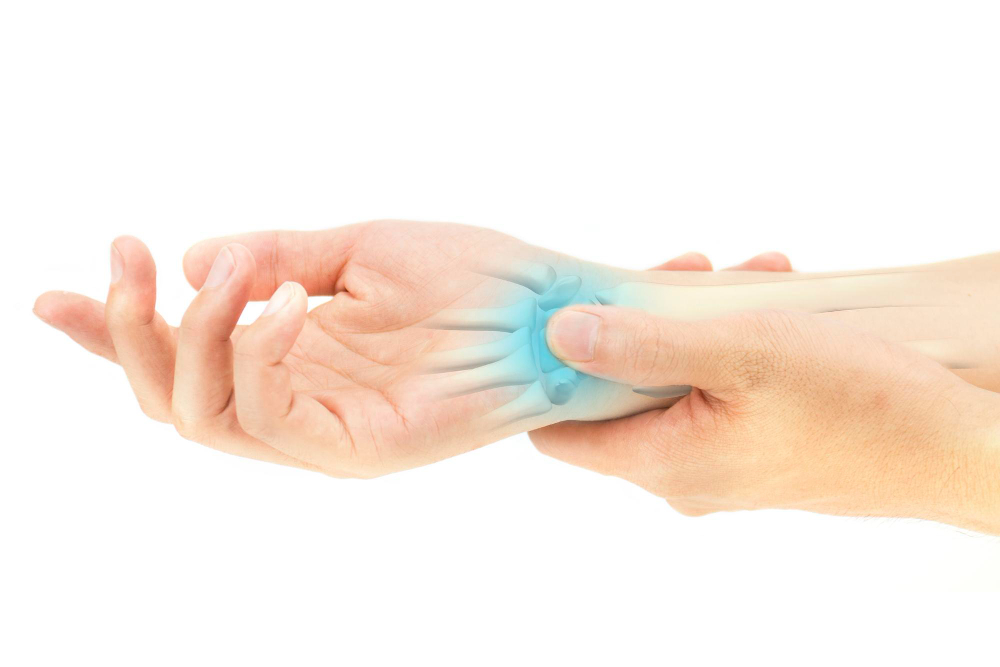Early Warning Signs of Carpal Tunnel Syndrome

That pins-and-needles feeling in your hand after a long day of typing—is it just temporary discomfort, or could it be an early sign of carpal tunnel syndrome? This common condition affects millions of people, often starting subtly before progressing to more persistent pain. Understanding the early symptoms is crucial for seeking timely treatment and preventing long-term nerve damage.
This guide will walk you through the key warning signs of carpal tunnel syndrome. We'll explore what causes it, how it progresses, and what you can do to find relief. Knowing when to see a specialist can make all the difference in managing this condition effectively and maintaining your hand function for years to come.
What is Carpal Tunnel Syndrome?
Carpal tunnel syndrome is a medical condition caused by the compression of the median nerve as it passes through the carpal tunnel—a narrow passageway in your wrist. The median nerve is responsible for sensation in your thumb and first three fingers, as well as for controlling some of the small muscles at the base of the thumb.
When the tissues surrounding the nerve swell, they can put pressure on it, leading to the symptoms we associate with carpal tunnel. This pressure can be triggered by a variety of factors, including repetitive hand motions, wrist injuries, certain health conditions like arthritis or diabetes, and even hormonal changes during pregnancy.
Recognizing the Early Symptoms
The initial signs of carpal tunnel syndrome are often mild and intermittent, making them easy to dismiss. However, recognizing them early can help you take proactive steps. Here are the key symptoms to watch for:
Numbness and Tingling
The most common early symptom is a sensation of numbness or tingling, similar to when your hand "falls asleep." This feeling typically affects the thumb, index, middle, and ring fingers. It often appears at night and may be strong enough to wake you up. Many people find that shaking their hands provides temporary relief. As the condition progresses, this sensation may start to occur during daytime activities, especially those involving a flexed wrist, like driving or holding a phone.
A Dull Ache or Discomfort
Before sharp pain sets in, you might experience a dull, aching sensation in your wrist, hand, or even extending up your forearm. This discomfort can feel like a deep, internal ache that isn't tied to a specific injury. It may be more noticeable after a long day of work or after activities that put strain on your wrists.
Weakness in the Hand
Have you noticed yourself dropping objects more frequently? Or do you find it harder to grip things like a coffee mug or a doorknob? This could be a sign of developing weakness in the muscles controlled by the median nerve, particularly those in the thumb. This weakness is often subtle at first but can become more pronounced over time, making tasks that require fine motor skills, like buttoning a shirt or writing, more challenging.
Occasional Shock-Like Sensations
Some people experience occasional, brief, shock-like sensations that radiate into the thumb and first three fingers. These zaps can be surprising and uncomfortable, often occurring without a clear trigger. They happen when the compressed median nerve sends out faulty signals.
When Should You See a Doctor?
If you experience any of these symptoms regularly, it's a good idea to consult a medical professional. Don't wait for the pain to become constant or severe. An early diagnosis is key to effective treatment and can help you avoid more invasive procedures down the line. A doctor, such as an orthopedic surgeon in Deltona, FL, can perform a physical examination and may recommend further tests to confirm the diagnosis.
Common diagnostic methods include:
- Tinel's Sign: Your doctor will gently tap over the median nerve at your wrist. If you feel a tingling sensation or a mild shock, the test is considered positive.
- Phalen's Test: You'll be asked to press the backs of your hands together with your fingers pointing down for about a minute. This position compresses the carpal tunnel, and if it triggers your symptoms, it suggests carpal tunnel syndrome.
- Nerve Conduction Studies: This test measures how quickly electrical signals travel through your median nerve, helping to confirm the diagnosis and assess the severity of the compression.
Managing Carpal Tunnel Syndrome
Once diagnosed, there are several treatment options available, ranging from simple lifestyle adjustments to surgical intervention. The right approach will depend on the severity of your symptoms.
- Lifestyle Modifications: For mild cases, making ergonomic adjustments to your workspace, taking frequent breaks from repetitive tasks, and performing stretching exercises can provide significant relief.
- Wrist Splinting: Wearing a splint, especially at night, helps keep your wrist in a neutral position, reducing pressure on the median nerve while you sleep.
- Medication: Over-the-counter anti-inflammatory drugs can help reduce swelling and pain. In some cases, a doctor might recommend corticosteroid injections to provide more targeted relief.
- Surgery: If conservative treatments aren't effective or if nerve damage is progressing, a surgical procedure called a carpal tunnel release may be recommended. This procedure involves cutting the ligament that is pressing on the median nerve, creating more space and relieving the compression.
Take the Next Step Toward Relief
Ignoring the early signs of carpal tunnel syndrome can lead to more severe pain, chronic weakness, and potentially irreversible nerve damage. If the symptoms described in this post sound familiar, it's time to seek professional medical advice. An experienced orthopedic specialist can provide an accurate diagnosis and create a personalized treatment plan to help you regain comfort and function in your hands.
If you're looking for an orthopedic surgeon in Deltona, FL, the team at Central Florida Bone & Joint Institute is here to help. Contact us today for more information or to schedule a consultation and take the first step toward living pain-free.